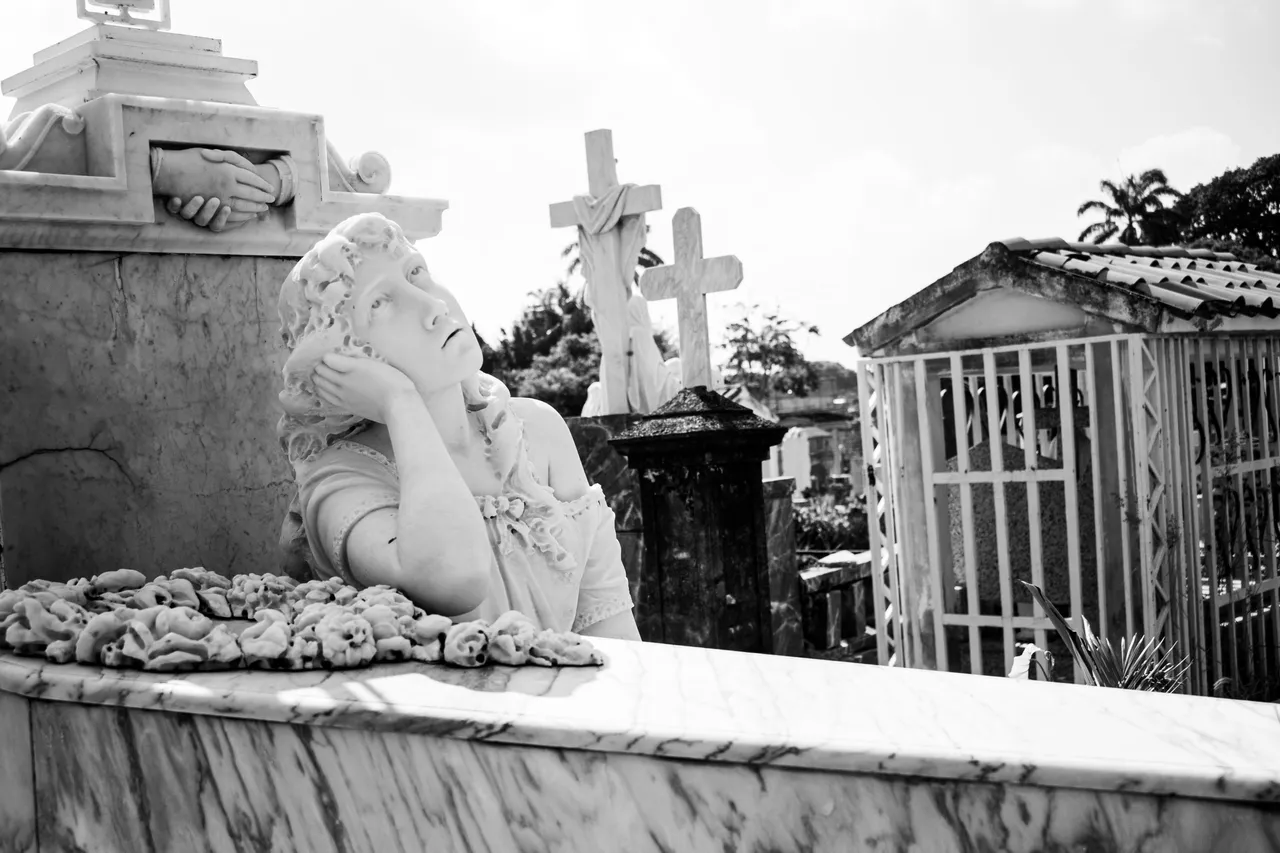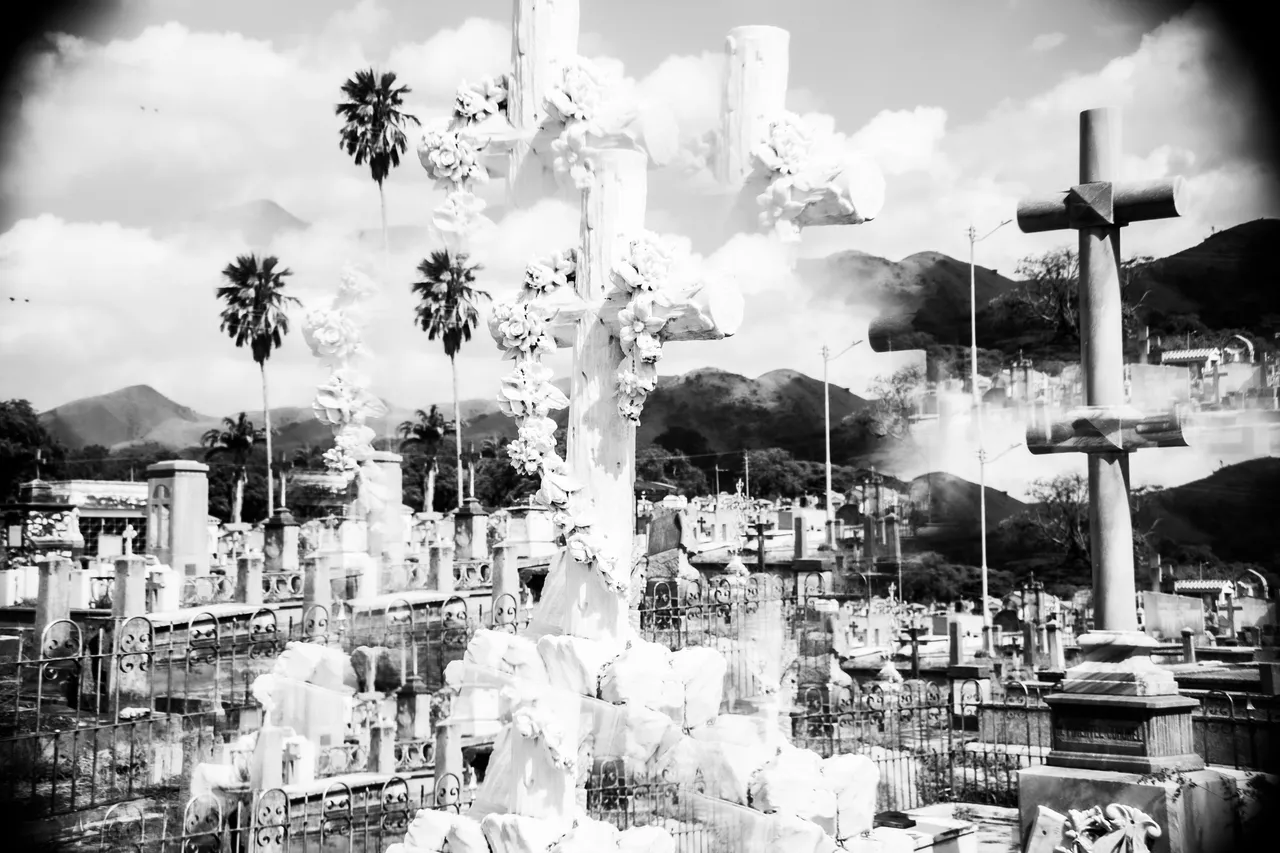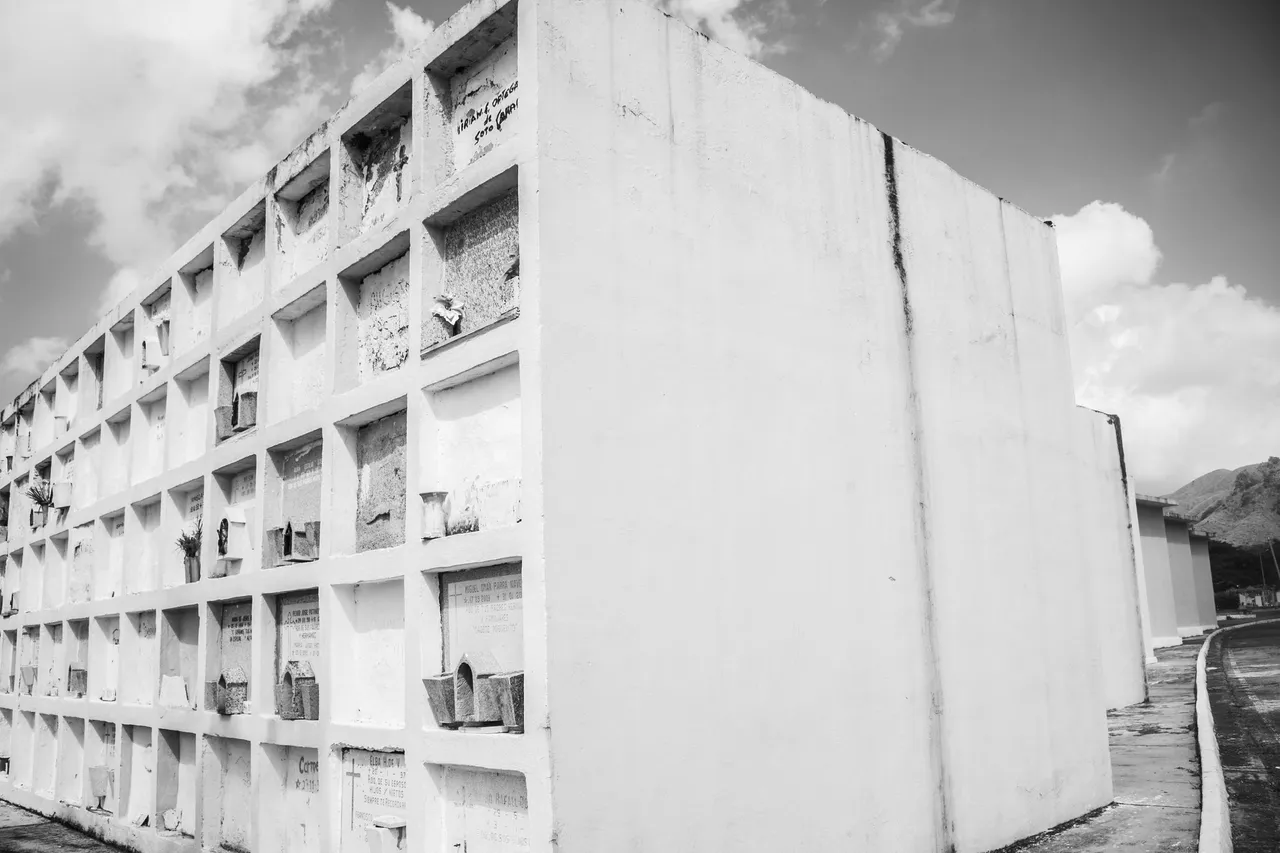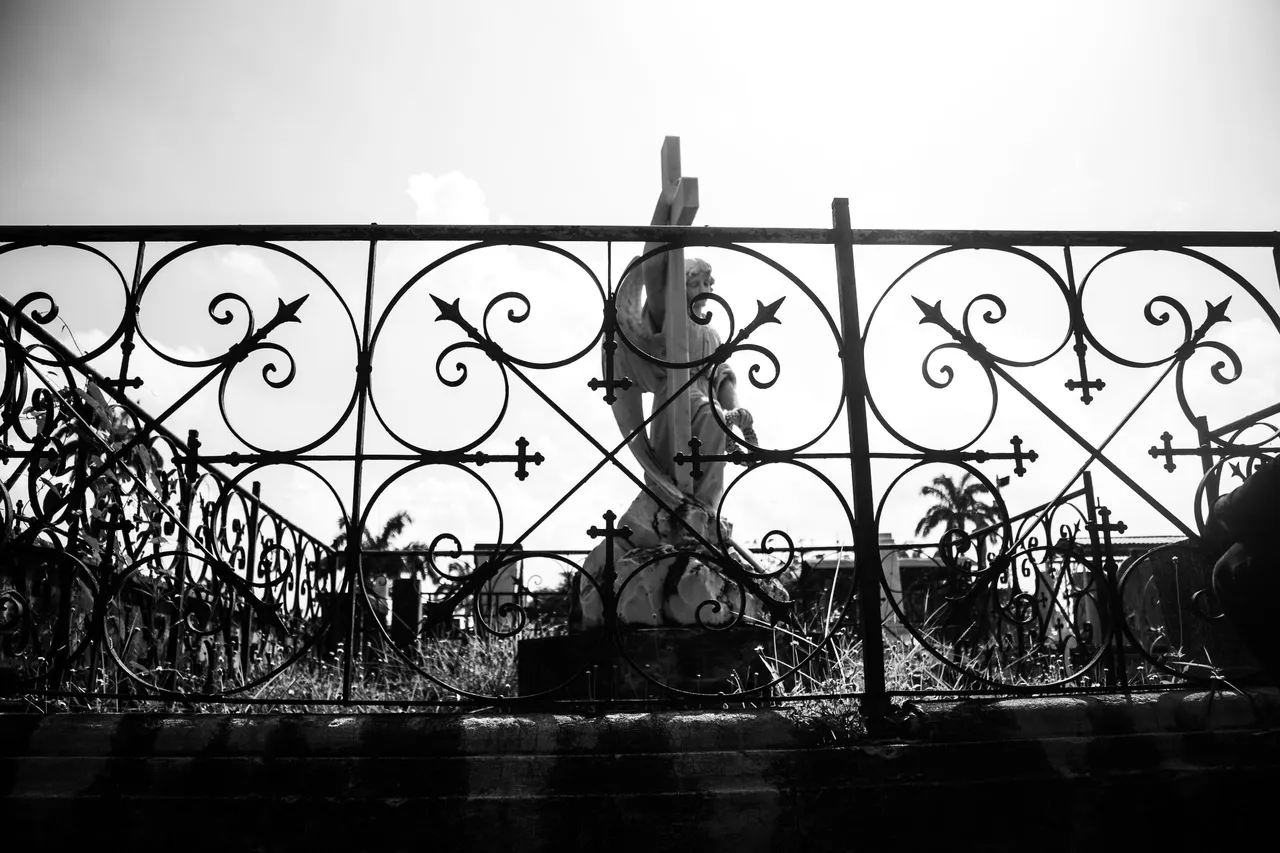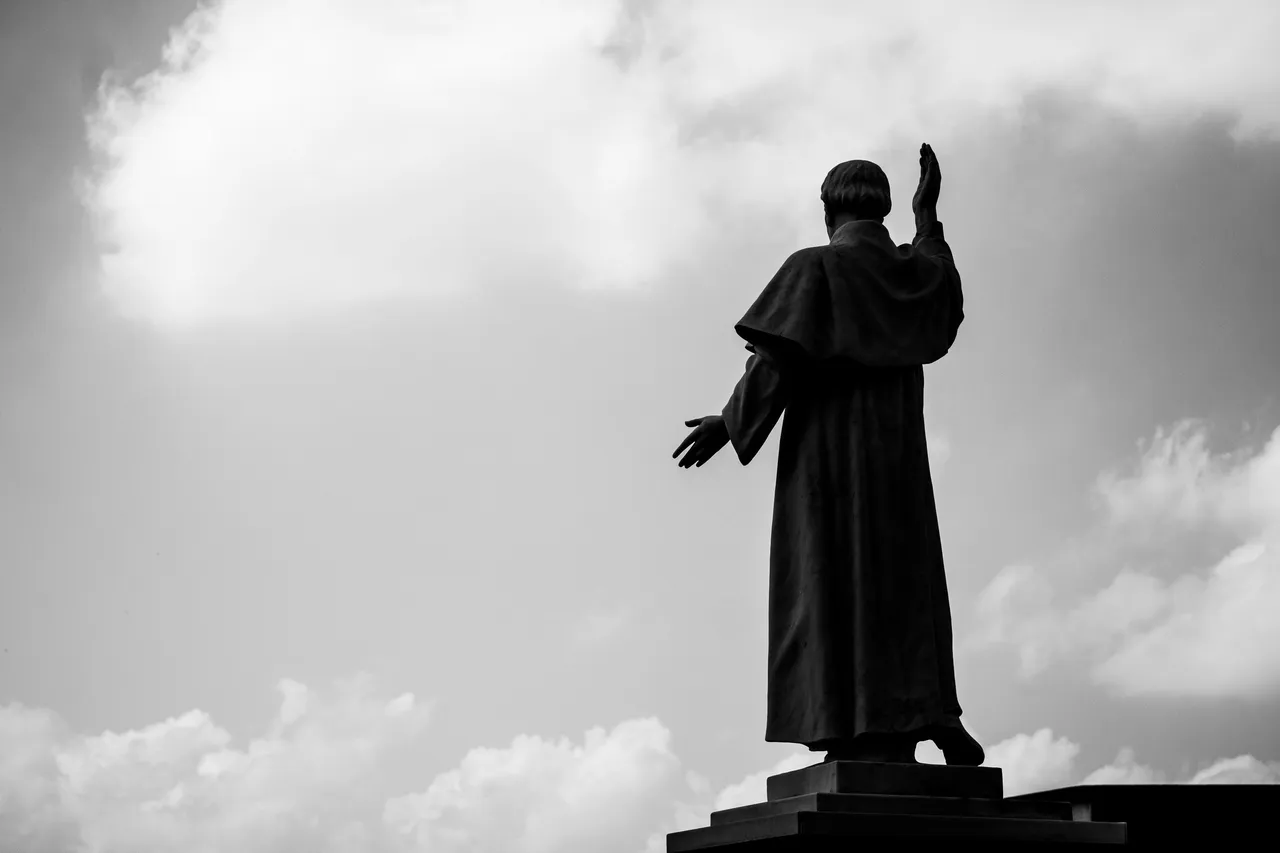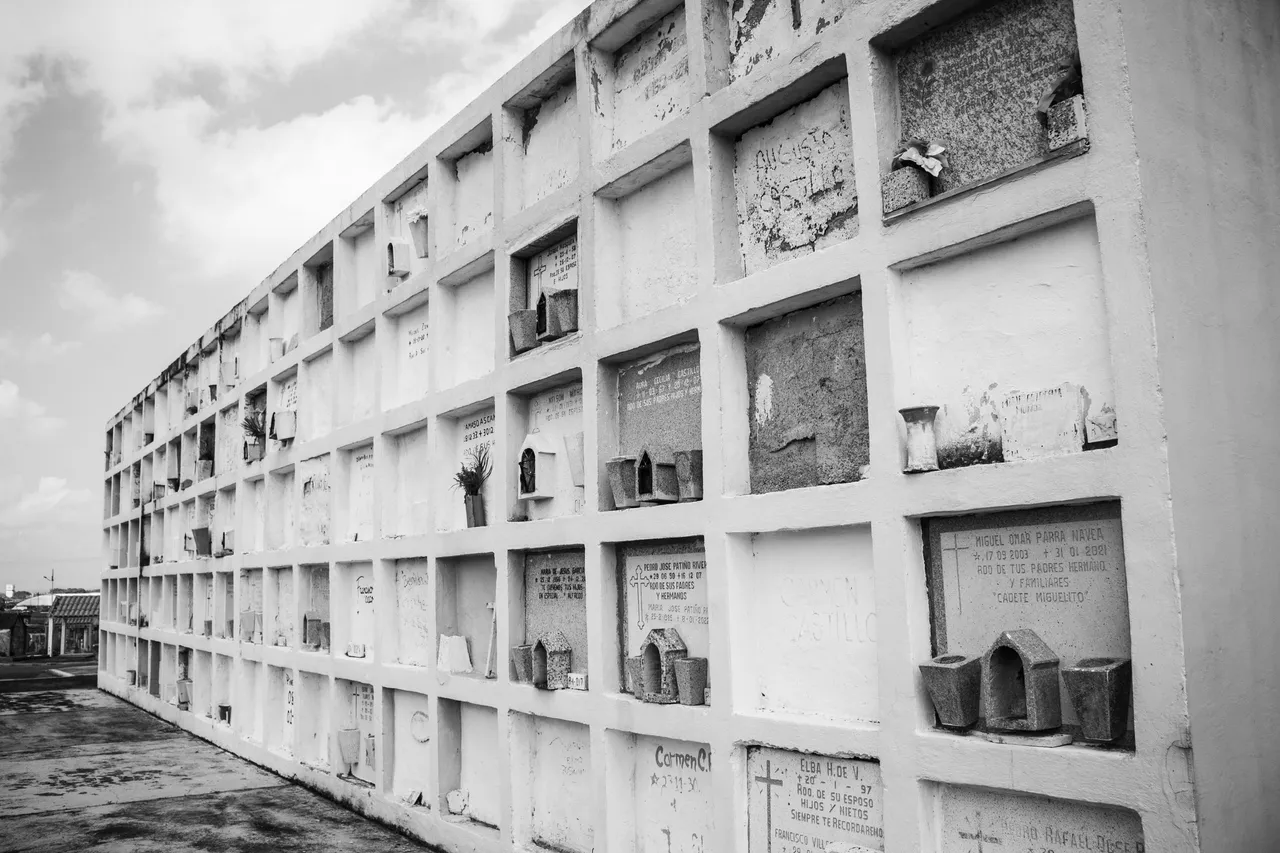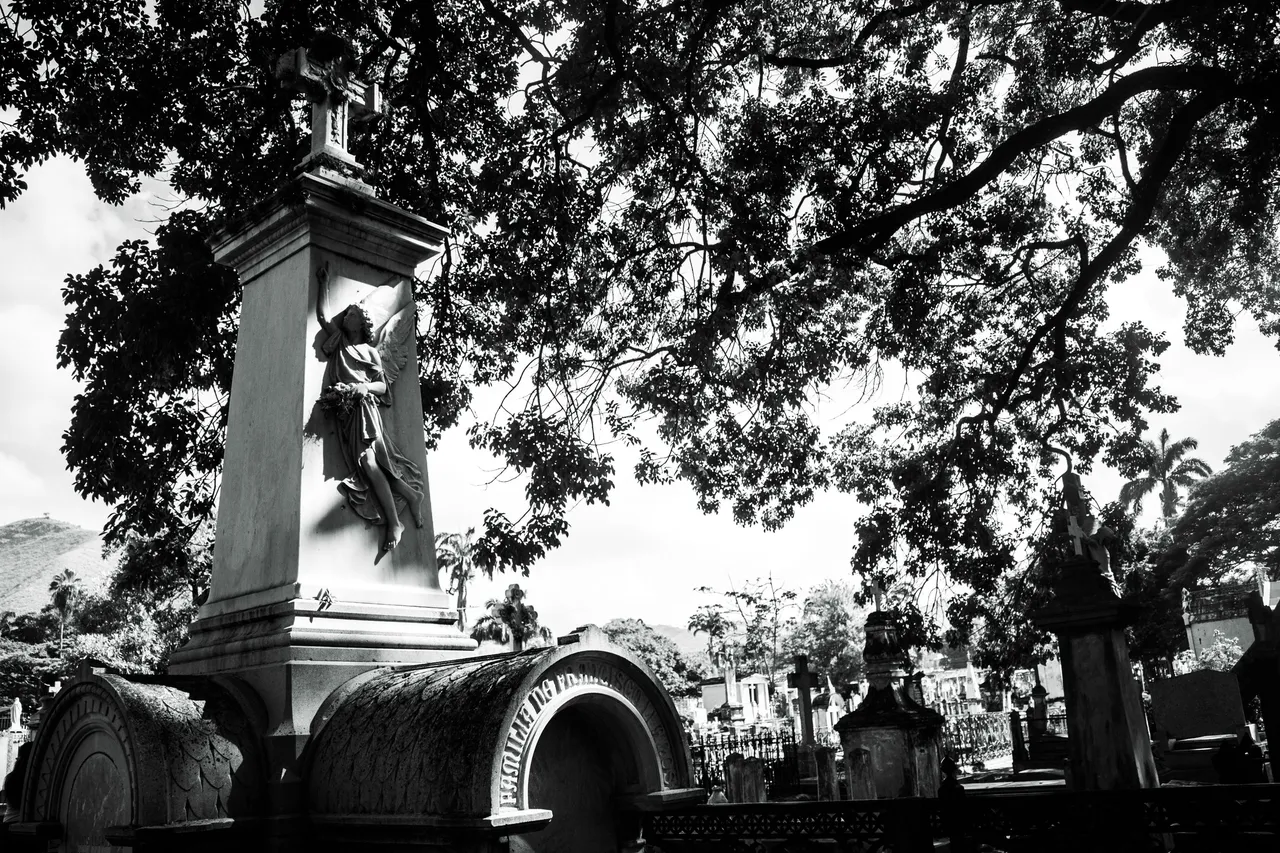
Architecture is functional in daily life, but also in daily death. It is divided into blocks and streets, as if it were a town, with its traditions, rituals, and customs.
The tradition? The care of the graves. Whether by family members or by people hired in exchange for money.
The ritual? The burial. The weeping, the preacher who is not a priest but who, in exchange for money, dedicates a few words to someone he never knew. Or the ice cream vendor amidst the relentless heat.
The custom? Death. It arrives daily and at any hour. It respects no schedules.
This is how architecture adapts to this to become a special place where the living and the dead seem to coexist in peace.
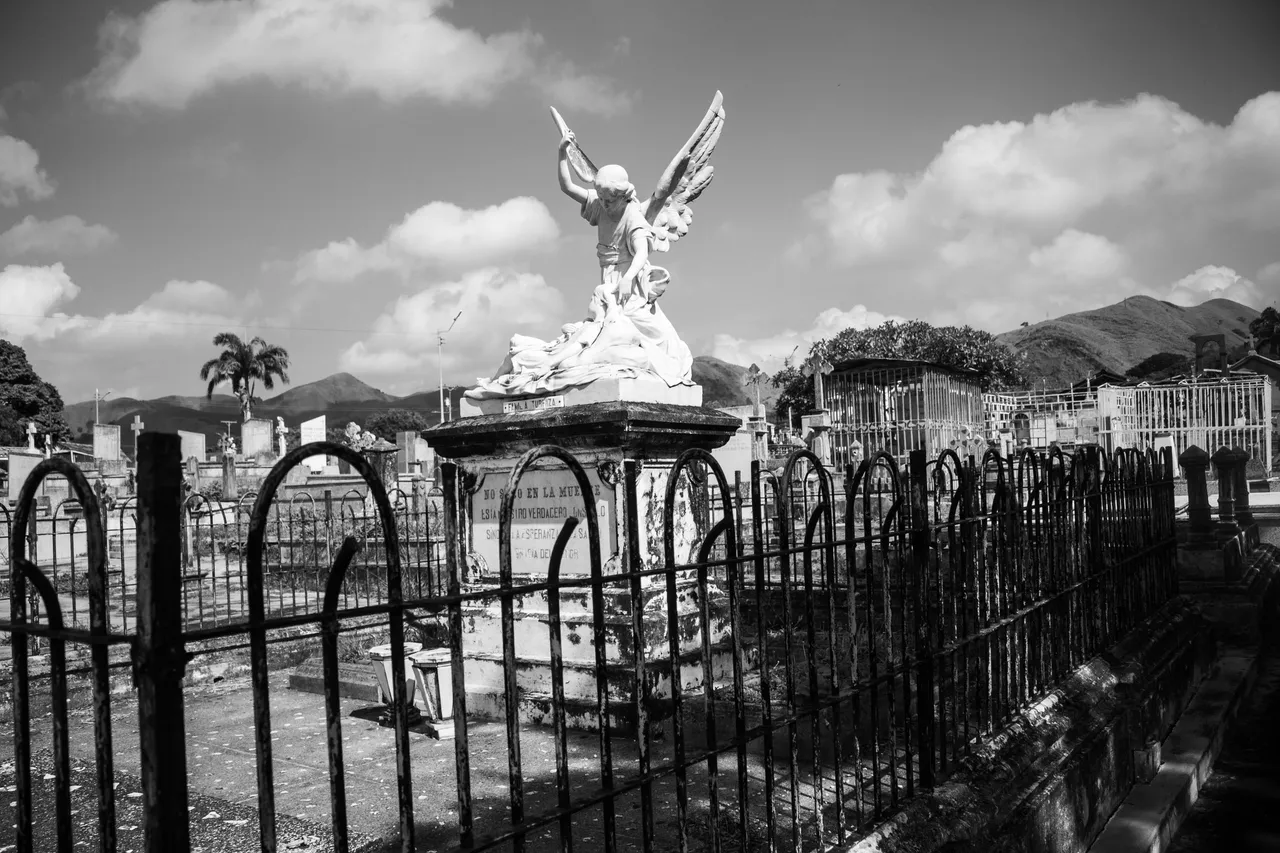
La arquitectura es funcional en la vida diaria, pero también en la muerte diaria. Está dividida en manzanas y calles, como si se tratara de un pueblo, con sus tradiciones, rituales y costumbres.
¿La tradición? El cuidado de las tumbas. Ya sean familiares o personas encargadas a cambio de dinero.
¿El ritual? El entierro. El llanto, el predicador que no es cura, pero que a cambio de dinero dedica unas palabras a quien nunca conoció. O el vendedor de helados ante el calor inclemente.
¿La costumbre? La muerte. Llega a diario y a cualquier hora. No respeta horarios.
Es así como la arquitectura se adapta a esto para convertirse en un lugar especial, donde vivos y muertos parecen cohabitar en paz.
